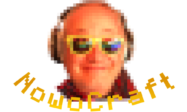Homeschooling during the Covid19 crisis and the lockdowns caused by it, has put a lot of additional stress on families. Faced with suddenly being cast in the role of a surrogate teacher, many parents struggle. Especially, since a lot of teachers will tell you that teaching your own kids is a completely different kettle of fish than teaching someone else’s.
Mathematics, the bane of my own school days, has proved to be particularly challenging. Specifically the current topics in geometry, areas and volumes, were not easy for me to explain. The book gave examples and tests, with the answers provided by the teacher. But for the actual didactic work, how to explain it to my son, I was left to my own devices.
And then I thought of Minecraft. In a way it’s the ideal tool to interest a child in geometry because at a very abstract level that is all it is: cube based geometry. Of course, that also means that you’re pretty much limited to cubes and, with a bit of imagination triangles. Anything circle based is not on the Minecraft curriculum. But I’ll deal with it, when when get to that. For the time being, here is what I did:
Geometric Area Calculation
Obviously, Minecraft lends itself to the calculation of rectangular areas:
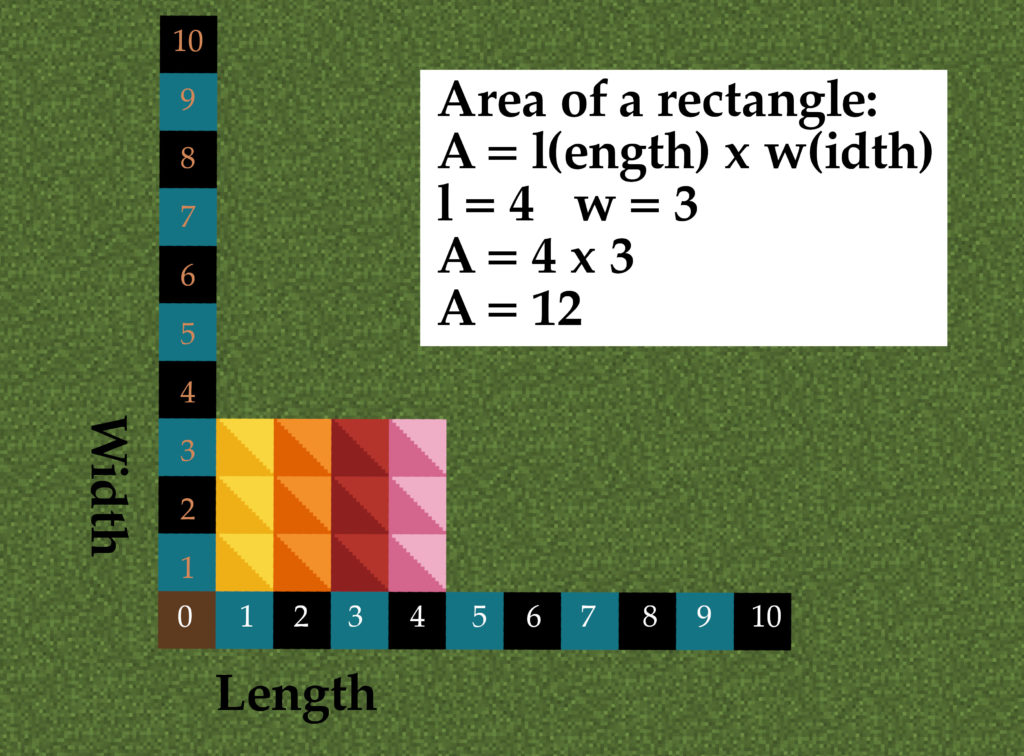
However, more complex areas are also possible, like the trapezoid here:
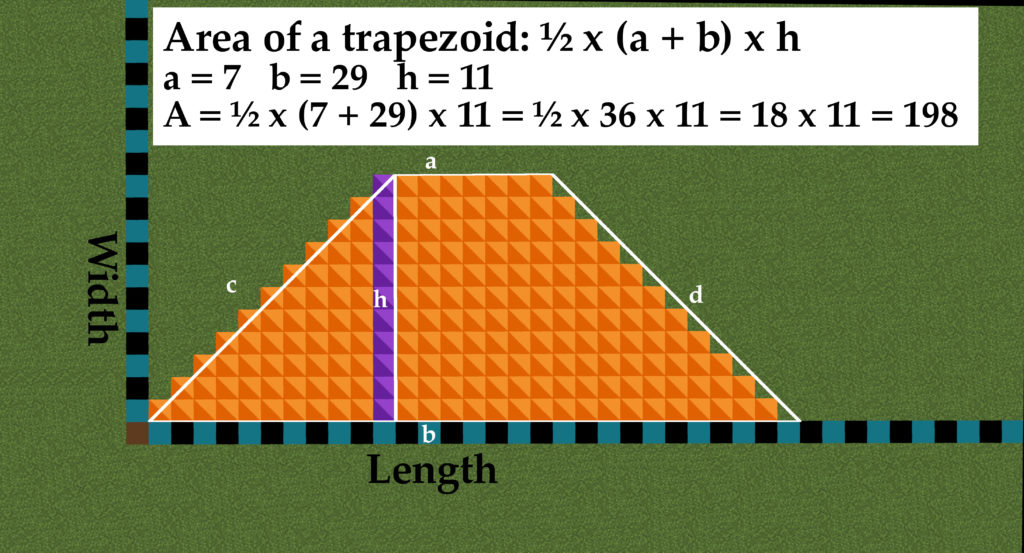
Obviously, this is not useful to solve actual exercises. But it does help as the kids can see what they need and count the blocks. I found that this gives my son a better understanding of the more theoretical aspects of area calculations. Plus, it’s fun, as I let him place the blocks. The time spent on this is absolutely not wasted, as it makes memorising these formulas much easier!
Geometric Volume Calculation
For volume calculation, Minecraft is even better suited, it being a 3D game. One of the challenges was to understand, why so many cubes with a side length of 1cm go into a cube with a side length of 100cm. The answer, 1 Million, seemed wrong to him. So I measured out an area with a side size of 100 blocks:
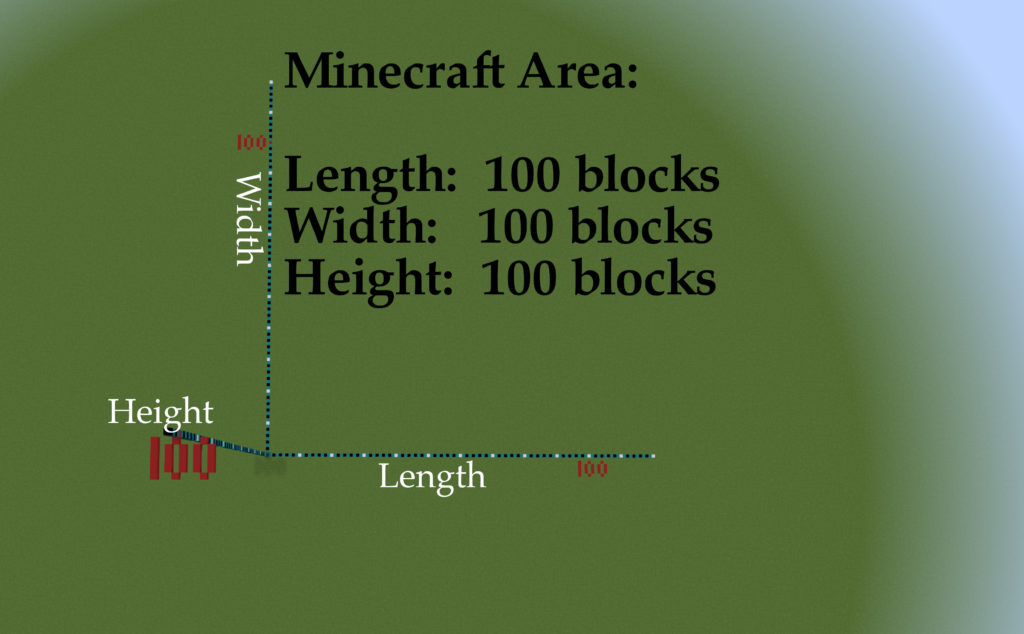
I asked him, how many blocks would be needed for the first layer. The answer was “1000”. Good thing he didn’t give the right answer, because now I gave him 1000 yellow wool blocks and asked him to fill in the space:
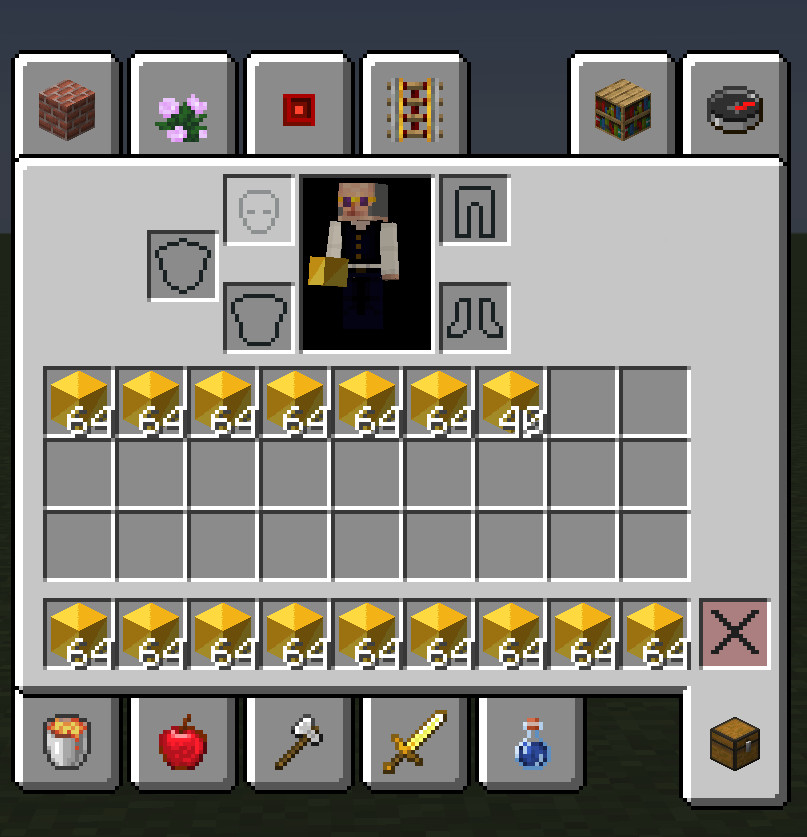
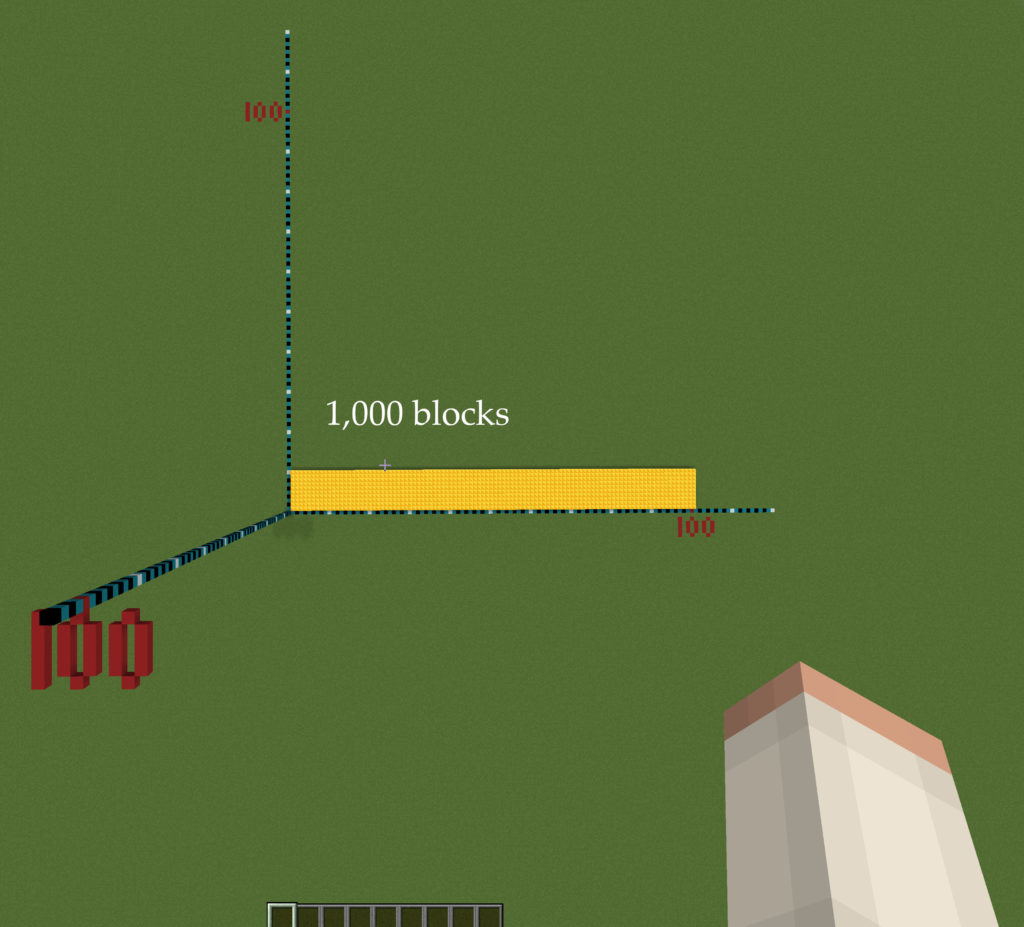
I didn’t make him place the other 9,000 blocks but used the Minecraft mod (a program that changes how Minecraft works) World Edit, which allows you to place a large number of blocks at the same time.
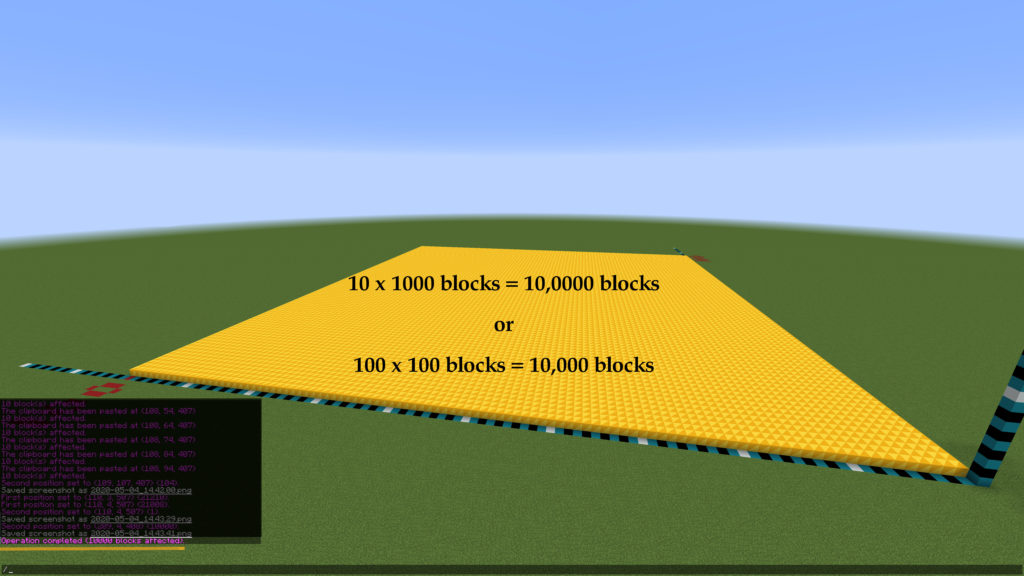
Next, we built 10 more layers with World Edit, which brought us to a total of 100,000 blocks:
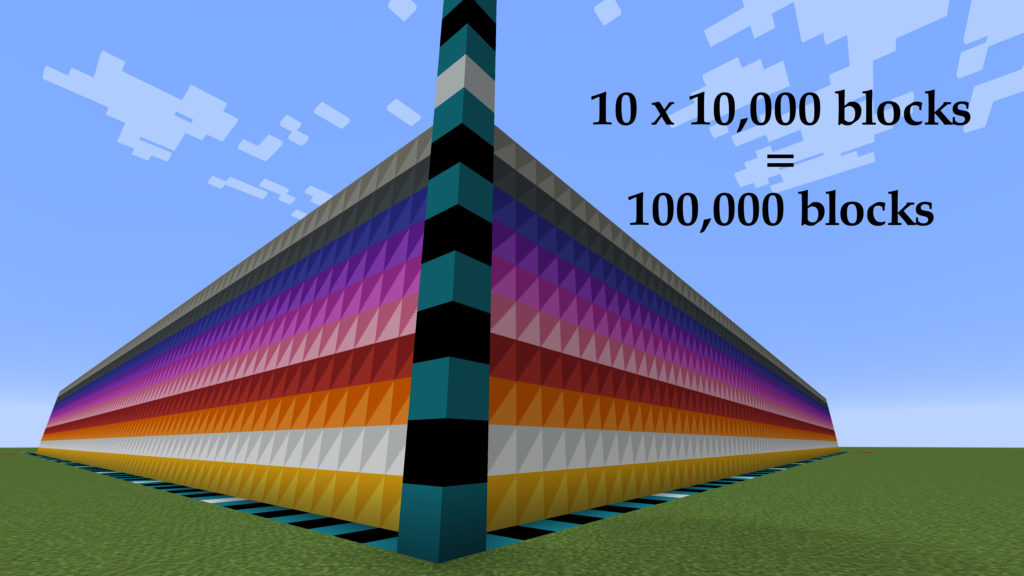
And now, before we even copied this to reach the hight of 100 blocks, he said: “Ah, yes. And we need 10 layers of these so 1 million blocks!”
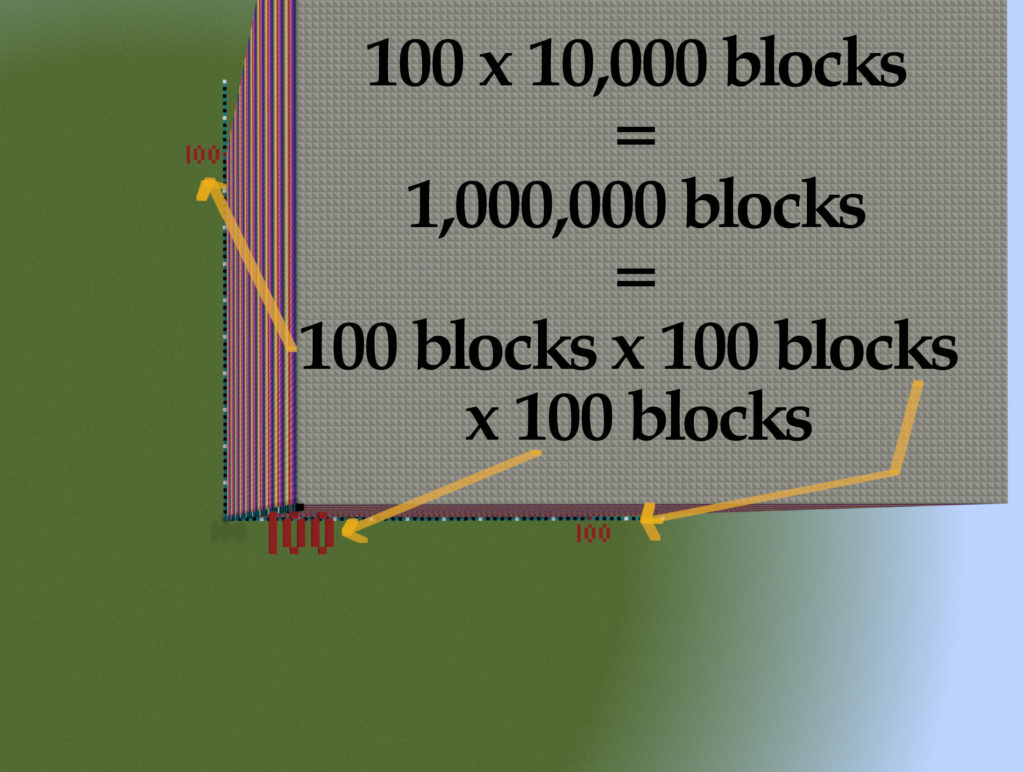
It wasn’t even that he couldn’t have calculated this before. It was more that he couldn’t believe it and with that distrusted his results. Having experienced this, he now knows that when working with volumes, large numbers are to be expected.
In addition, we built a few more shapes and calculated the volume. We also calculated the surface area of these shapes. We both had quite a lot of fun with a topic that we’re not too keen on, generally speaking. I’m sure it will help him to better remember and visualise these formulas in the future.
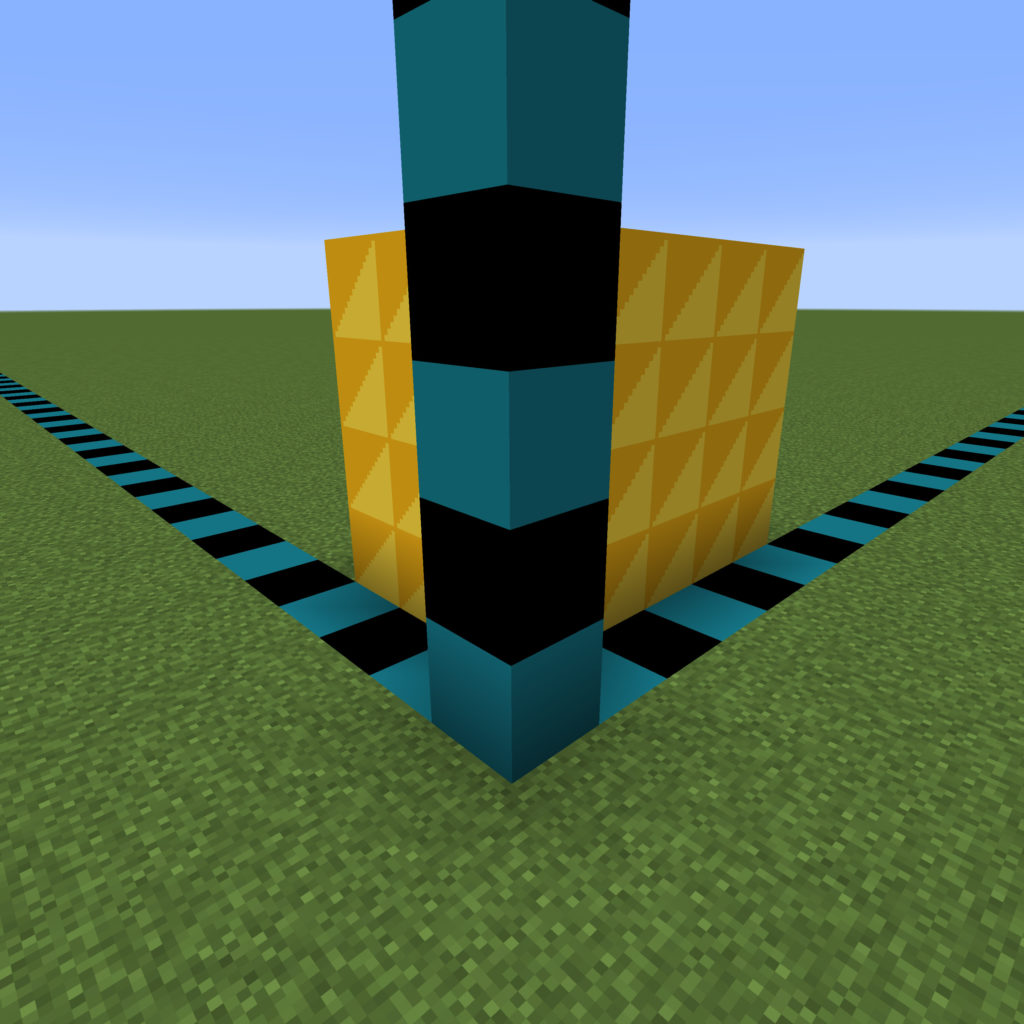
At the end of the day, Minecraft is game and after building geometrical shapes to learn something we were both glad to jump onto our family server to build geometrical shapes for fun.
I hope you found some suggestions on how to use Minecraft for studying with your children! Let me know if you found this helpful and don’t forget to follow me on Twitter for more updates and blog posts!
For now, it’s NowoCraft over and out!
